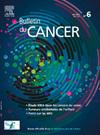浸润性乳腺癌放疗降压治疗:误区与现实
IF 0.8
4区 医学
Q4 ONCOLOGY
引用次数: 0
摘要
乳腺癌的辅助放疗在局部控制和总体生存方面都证明了它的益处。然而,现在看来有可能降低治疗的适应症和技术方式。其中一些新方法已经得到了验证,而另一些则需要进一步研究。一些试验表明,较短的治疗方案(42.5Gy / 16次,41.6Gy / 13次,40Gy / 15次)相当于较长的治疗方案。它几乎适用于所有患者,如果有必要,可以通过增加原始肿瘤体积来补充。加速部分乳房放疗可用于局部预后良好的患者(肿瘤大小≤3cm,单灶性,激素受体阳性,无HER2过表达),理想情况下通过间质近距离放疗进行,因为加速3D放疗在这种情况下尚未显示出益处。然而,局部乳房照射可以使用适度的低分割和三维放疗。术中放疗对老年患者是一种有趣的替代方法,但其适应症有更多的限制。患者对这些方法的选择必须严格,部分取决于所选择的技术。患者应充分了解每种技术的潜在副作用。本文章由计算机程序翻译,如有差异,请以英文原文为准。
Désescalade thérapeutique en radiothérapie du cancer du sein infiltrant
La radiothérapie adjuvante du cancer du sein a démontré son intérêt, tant en termes de contrôle local que de survie globale. Mais il semble possible de réaliser une désescalade tant dans ses indications que dans ses modalités techniques. Certaines de ces nouvelles approches sont d’ores et déjà validées, d’autres nécessitent des études complémentaires. L’hypofractionnement a fait l’objet de plusieurs essais, qui ont permis de montrer l’équivalence des schémas courts (42,5 Gy en seize fractions, 41,6 Gy en treize fractions ou 40 Gy en quinze fractions) sur des schémas plus longs. Il peut être proposé pour quasiment toutes les patientes et être complété si besoin par un boost sur le volume tumoral initial. La radiothérapie partielle et accélérée du sein, qui peut être réalisée chez des patientes de bon pronostic local (taille ≤ 3 cm, unifocale, présence de récepteurs hormonaux, sans surexpression de HER2) est idéalement réalisée par curiethérapie interstitielle, la radiothérapie 3D accélérée n’ayant pas démontré encore son bénéfice dans cette indication. En revanche, la radiothérapie partielle peut être réalisée avec un hypofractionnement modéré en radiothérapie 3D. La radiothérapie peropératoire, dont les indications sont plus restrictives, est une alternative intéressante chez les patientes âgées. La sélection des patientes pour ce type d’approche doit être rigoureuse et dépend en partie de la technique choisie. L’information de la patiente sur les potentiels effets secondaires de chaque technique doit également être complète.
Adjuvant radiotherapy for breast cancer has demonstrated its benefit both in terms of local control and overall survival. However, it now appears possible to de-escalate both the indications and the technical modalities of treatment. Some of these new approaches are already validated, while others require further studies. Hypofractionation has been the subject of several trials, which have shown that shorter regimens (42.5 Gy in 16 fractions, 41.6 Gy in 13 fractions, or 40 Gy in 15 fractions) are equivalent to longer schedules. It can be proposed for almost all patients and can be complemented, if necessary, by a boost to the original tumor volume. Accelerated partial breast irradiation, which can be used in patients with favourable local prognosis (tumor size ≤ 3 cm, unifocal, hormone receptor-positive, no HER2 overexpression), is ideally delivered via interstitial brachytherapy, as accelerated 3D radiotherapy has not yet shown benefit in this setting. However, partial breast irradiation can be delivered using moderate hypofractionation with 3D radiotherapy. Intraoperative radiotherapy, which has more restrictive indications, is an interesting alternative for elderly patients. Patient selection for these approaches must be rigorous and depends partly on the technique chosen. Patients should be fully informed about the potential side effects of each technique.
求助全文
通过发布文献求助,成功后即可免费获取论文全文。
去求助
来源期刊

Bulletin Du Cancer
医学-肿瘤学
CiteScore
1.90
自引率
16.70%
发文量
224
审稿时长
37 days
期刊介绍:
Without doubt, the ''Bulletin du Cancer'' is the French language publication of reference in the field of cancerology. Official organ of the French Society of Cancer, this journal covers all the information available, whether in the form of original articles or review articles, but also clinical cases and letters to the editor, including various disciplines as onco-hematology, solids tumors, medical oncology, pharmacology, epidemiology, biology as well as fundamental research in cancerology. The journal proposes a clinical and therapeutic approach of high scientific standard and regular updates in knowledge are thus made possible. Articles can be submitted in French or English.
 求助内容:
求助内容: 应助结果提醒方式:
应助结果提醒方式:


